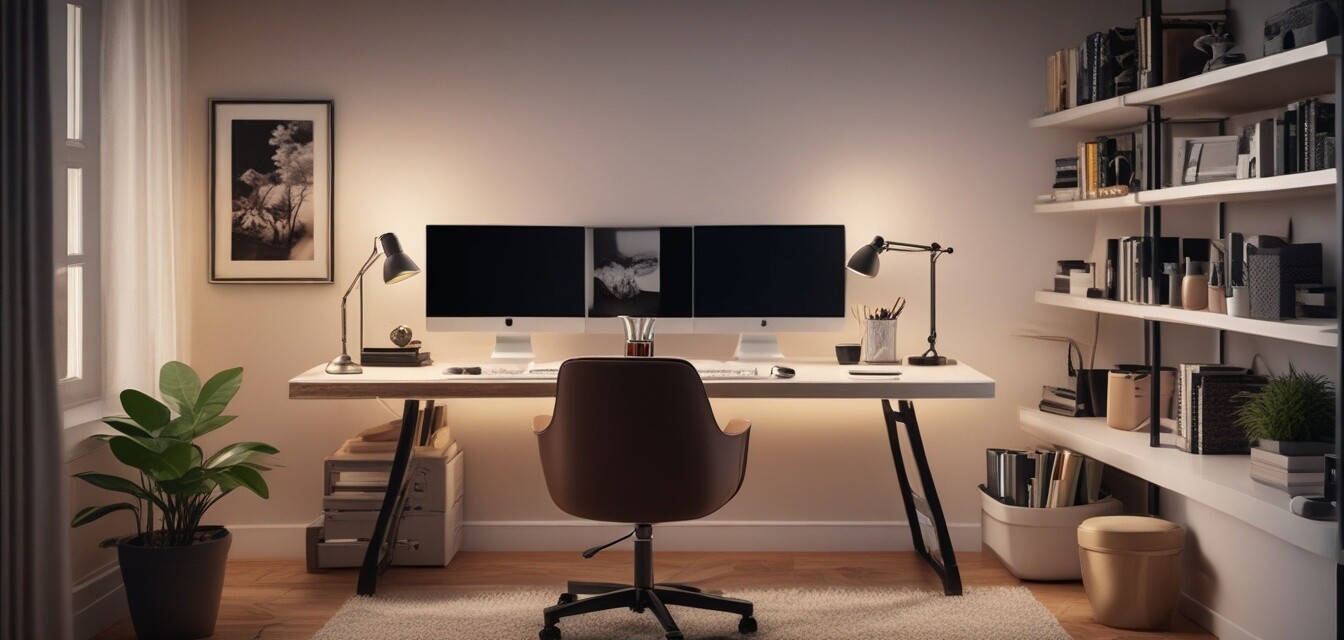
How to Create a Personalized Workspace in Your Home Office
Key Takeaways
- Define your personal style to personalize the space.
- Incorporate ergonomic furniture for comfort.
- Use color and lighting to create an inspiring environment.
- Organize your workspace to enhance productivity.
- Add decorative elements that reflect your personality.
Designing a personalized workspace in your home office can enhance both your creativity and productivity. It's not just about aesthetics; a thoughtfully crafted environment can improve your focus and make working from home a more enjoyable experience. In this article, we’ll explore various tips and strategies to help you create a unique workspace that reflects your individual style.
Step 1: Define Your Personal Style
Your workspace should be a reflection of who you are. This is the first step in creating a personalized environment. Consider these styles:
- Minimalist: Focus on clean lines, neutral colors, and uncluttered surfaces.
- Modern: Utilize bold colors, innovative furniture, and cutting-edge technology.
- Industrial: Incorporate raw materials like metal and wood for a rugged aesthetic.
- Classic: Choose traditional furniture with timeless designs.
Gather inspiration
Create a mood board using platforms like Pinterest to gather images that resonate with your style. This will help you visualize how different elements work together.
Step 2: Ergonomic Furniture for Comfort
Comfort is key in a home office. Investing in ergonomic furniture can ensure that you maintain good posture and reduce fatigue.
- Ergonomic chairs that provide lumbar support are essential.
- Adjustable desks allow you to alternate between sitting and standing.
- Consider monitor stands to elevate screens to eye level.
Step 3: Use Color to Inspire
The colors you choose can significantly impact your mood and productivity. Here are a few suggestions:
| Color | Effect |
|---|---|
| Blue | Promotes calmness and focus. |
| Yellow | Encourages creativity and optimism. |
| Green | Enhances balance and relaxation. |
| Red | Stimulates energy and productivity. |
Step 4: Optimize Lighting
Good lighting can make a huge difference in your workspace. Here are a few tips:
- Utilize natural light as much as possible.
- Invest in adjustable desk lamps for task lighting.
- Consider smart bulbs that can change color and brightness based on the time of day.
Step 5: Organize for Productivity
An organized workspace helps reduce distractions. Here are practical organization tips:
- Use desk organizers for pens and other supplies.
- Implement filing systems for paperwork.
- Keep a digital organization tool for planning and tasks.
For more detailed tips, check our Buying Guides.
Step 6: Add Personal Touches
Once you have the essentials covered, add decorations that express your personality. Consider incorporating:
- Artwork that inspires you.
- Personal mementos like photos or travel souvenirs.
- Plants to enliven the space and improve air quality.
Examples of Personalized Workspaces
Here are various elements to think about when creating your personalized workspace:
| Workspace Element | Traditional | Modern |
|---|---|---|
| Desk | Heavy wood with ornate design | Sleek metal and glass |
| Chair | Leather executive style | Contemporary ergonomic |
| Decor | Framed paintings | Contemporary art pieces |
Step 7: Final Touches
Once your office is set up, take a moment to make those final adjustments. Walk around, sit down, and check if everything feels right.
Don't forget to incorporate:\n
- Inspirational quotes displayed around for motivation.
- A cohesive color scheme for seamless design.
- Accessibility for ease of movement and functionality.
Pros
- Increased productivity and focus.
- Enhanced comfort during work sessions.
- A workspace that motivates creativity.
Cons
- Potential for distractions with home setup.
- Initial investment in ergonomic furniture.
- Requires maintenance to keep organized.
Conclusion
Creating a personalized workspace requires thoughtful planning and consideration of your personal style and needs. By following the steps outlined above, you can cultivate an environment that not only looks good but feels good to work in. A well-designed home office can inspire creativity, enhance productivity, and ultimately lead to greater happiness in your work-from-home experience.
For more setup ideas, browse our Setup Inspiration blog section.